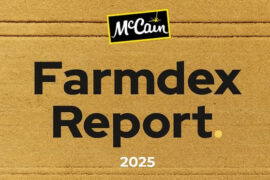The New York City-headquartered Private Label Manufacturers Association (PLMA) has released a study about food shopping attitudes and behaviors among recipients of Supplemental Nutrition Assistance Program (SNAP) benefits in the United States.
“The findings produce a marketing and merchandising roadmap that retailers can use to encourage SNAP customers to spend more of their monthly benefits on store brands, thereby stretching their food dollars,” said Peggy Davies, president of PLMA.
Titled “Stretching Food Benefits: SNAP Recipients Speak Out on Shopping & Store Brands,” the report was prepared for retailers by PLMA. It is based on data collected by Surveylab, a global customized online research. company. A nationwide sample of more than 500 SNAP recipients participated.
Like most American consumers, SNAP recipients are strongly predisposed to store brands. About three in 10 purchase store brands at a high rate each time they use their benefits. However, an almost equal number buy national brands at the private label products have ample room to grow in terms of sales among SNAP participants.

Respondents expressed a very favorable opinion of store brands when asked to compare them to national brands on six important product attributes, rating them higher in five, including “quality” and “value.” Most recipients are careful shoppers. Eight in 10 “always or frequently” buy SNAP products when they are on “sale in their favorite store,” eight in 10 typically use “all or nearly all” of their benefits each month, and six in 10 said they would find it “helpful” to see SNAP items marked as such on supermarket shelves. If their favorite stores accepted SNAP benefits for online shopping, as more and more retail chains are beginning to do, almost half in the study said they would “always” or “frequently” use such a service.
SNAP represents a big chunk of the grocery market. As of April 2021, according to the United States Department of Agriculture (USDA), there were 42.3 million people – about 20% of all adults living in the US – and 22.1 million households enrolled in SNAP. The total monthly benefit cost during April 2021 was $9.6 billion, a 26% increase over April 2020. The average per person and per household benefits were $203 and $386, respectively In October, average benefits will rise more than 25% from pre-pandemic levels.
Total grocery sales last year in all US outlets were $816 billion; in supermarkets they were $404 billion, according to Nielsen figures. By comparison, SNAP food expenditures in 2020 were $79 billion at authorized stores plus associated program costs. This year, total SNAP spending projects to exceed $100 billion, based on USDA data.
Combined, supermarkets and super stores redeem over 82% of annual SNAP benefits while comprising only 15% of the program’s 250,000 authorized retailers.
Expanding store brand sales among this group of consumers can be beneficial to all parties, Davies said. For the SNAP shopper, the savings realized from opting for store brands can be spent on additional SNAP food items in the store for their household. The retailer benefits by boosting high-margin, private label sales, and by strengthening consumer loyalty with an important and sizable demographic. And the SNAP program benefits by effectively getting more food products into recipients’ households for the same amount of federal dollars expended.
The PLMA report and its recommendations come at a time when program participants are under increasing pressure to feed themselves and their households. Even with the benefits, the cost of food remains an issue for many, says the USDA, whose June report said recipients still face major barriers to achieving a healthy diet throughout the month. The most common problem was the affordability of foods that are part of a healthy diet.
One way to contend with higher food prices, as the PLMA study suggests, is for recipients to buy more store brands. The cost savings can be significant. In separate research, PLMA sponsored the purchase over a four-week period of multiple, typical market baskets consisting of about three dozen SNAP eligible food products.
The average savings realized when the store brand versions of the products were bought vs the national brands were 38% when shopping in a major supermarket located in the northeastern United States, and 50% when shopping in a leading national mass merchandiser.






